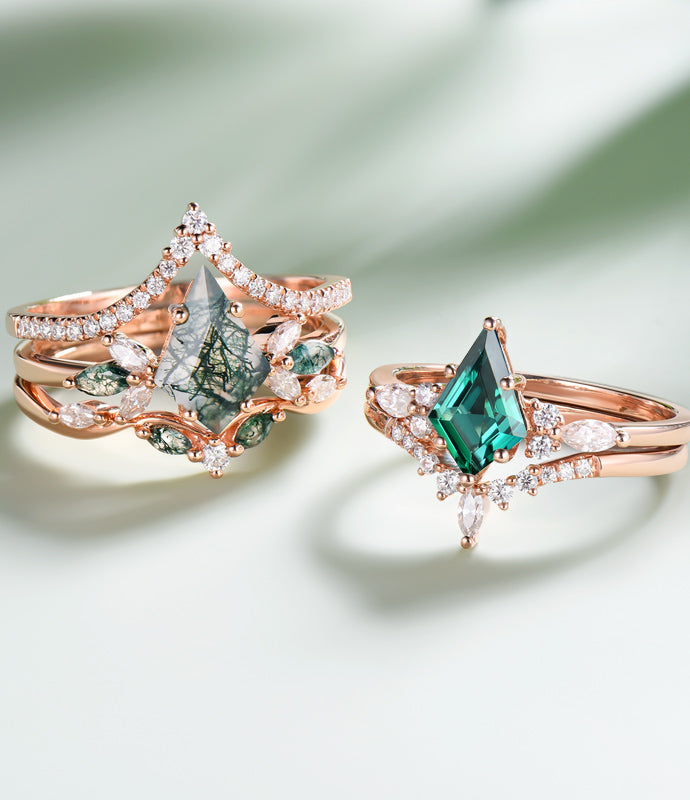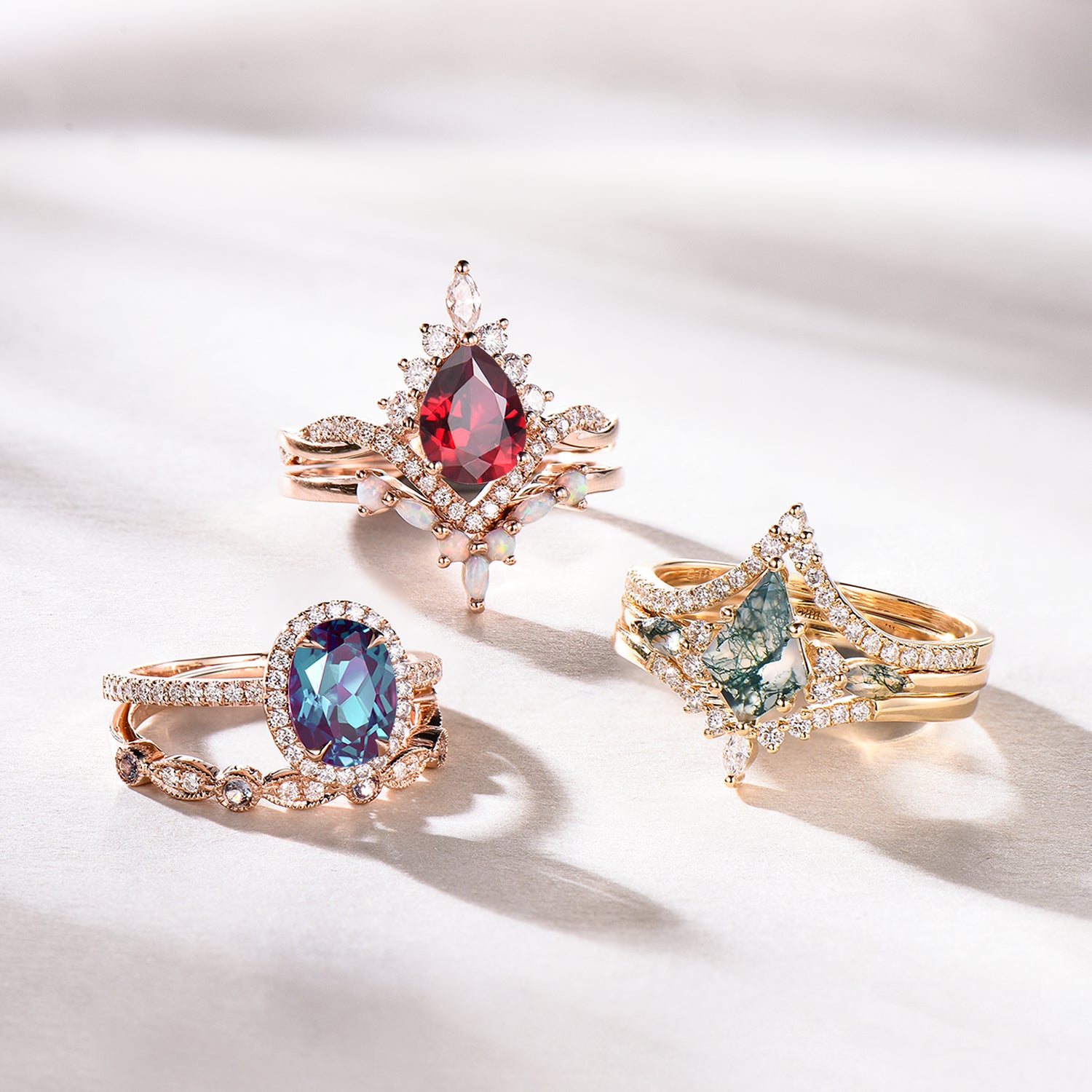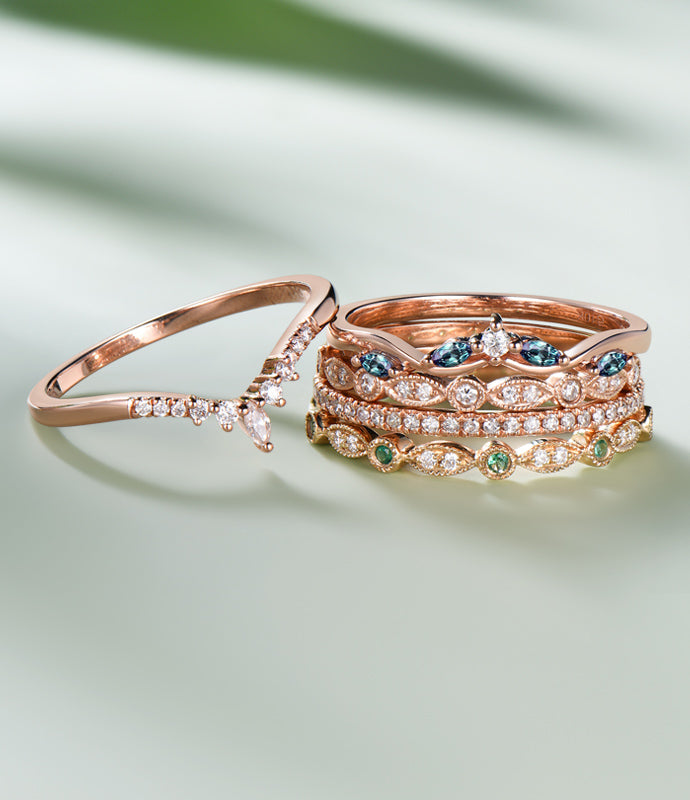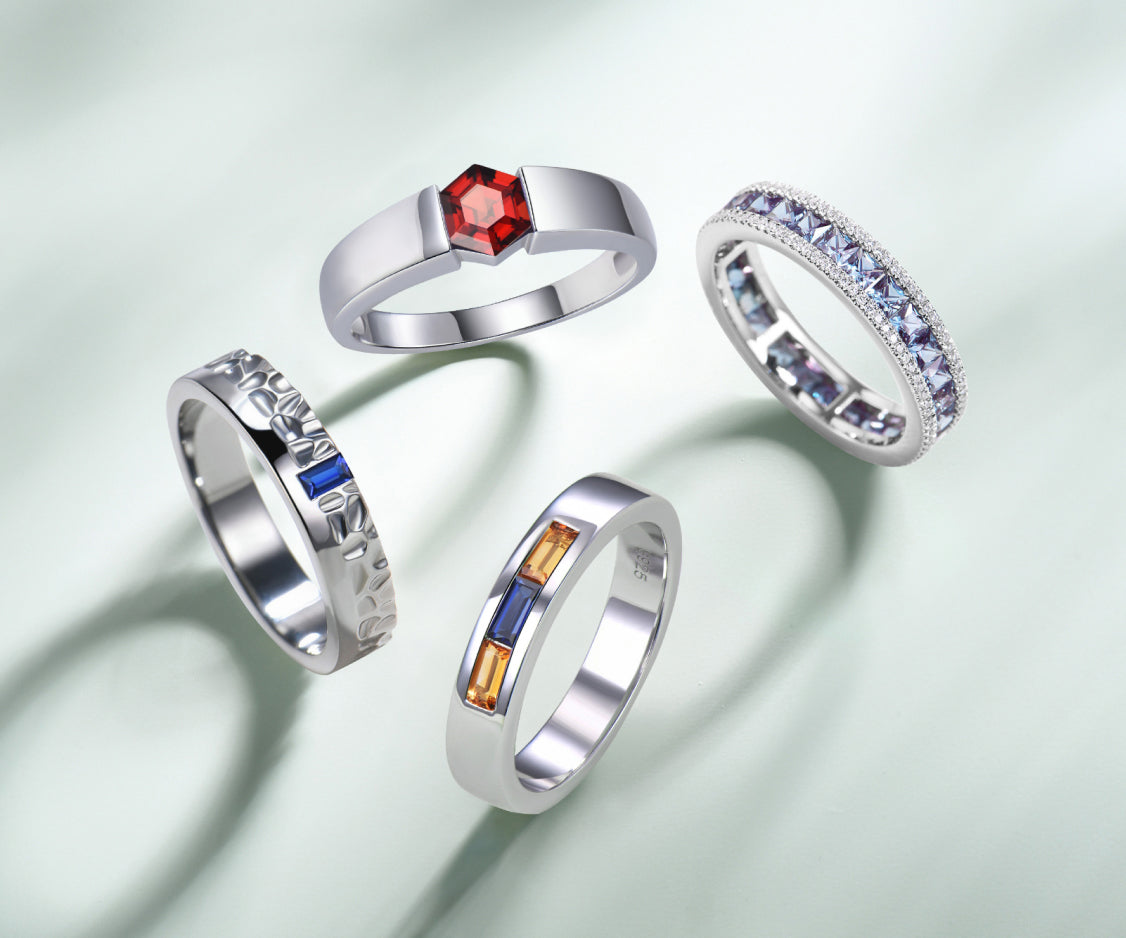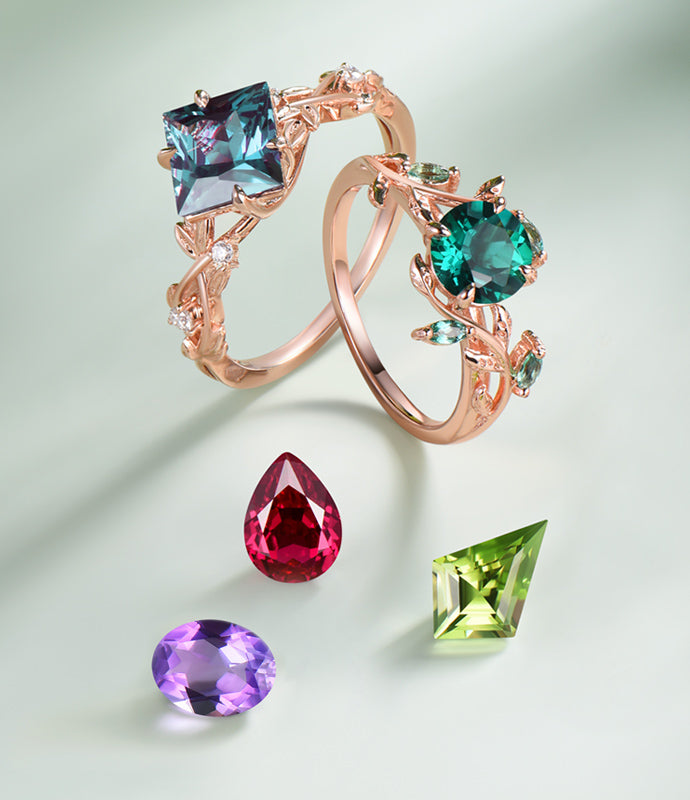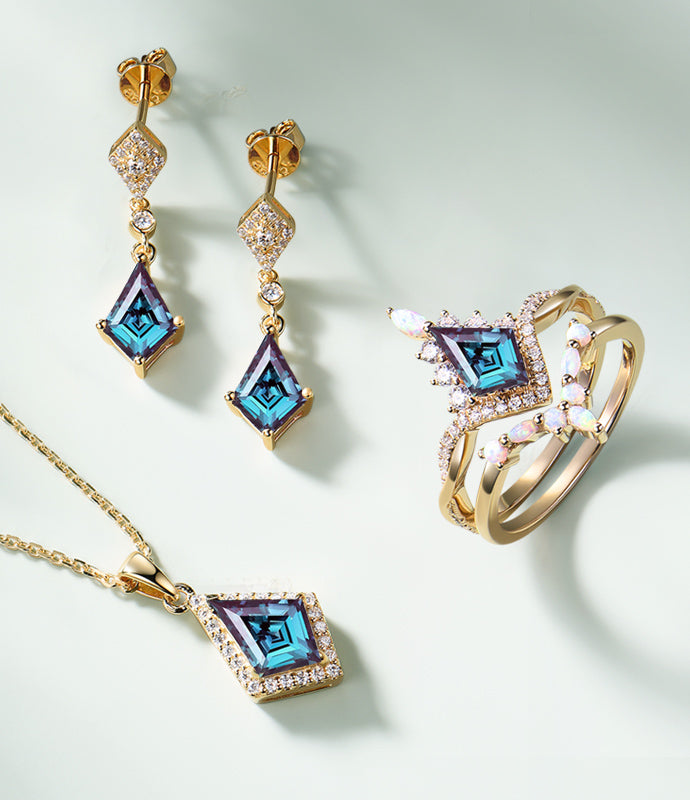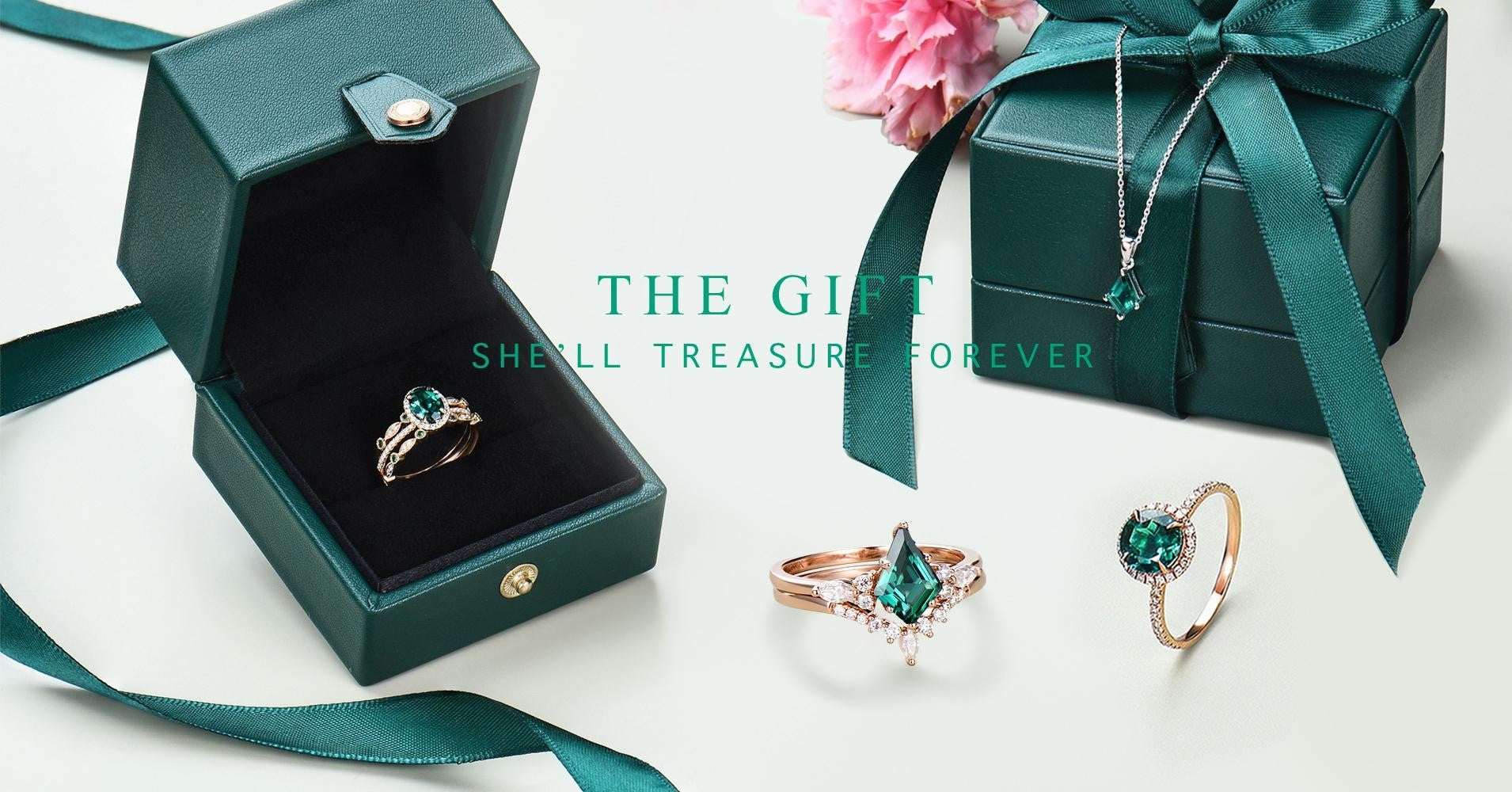Top 7 Diamond Engagement Ring Alternatives
There is no set-in-stone rule to getting a non-diamond-centered engagement ring. With the many gemstone options available, there are a couple of ring options worth considering. However, keep in mind that these many options will make your quest a little bit difficult. While non-diamond gemstones are quite popular nowadays, not everyone is fit to adorn your future fiancee’s finger, and with whatever you choose, ensure it matches the preferences of your significant other.
- Aquamarine Engagement Ring
Many future spouses are beginning to consider aquamarine because of its pale blue color and outstanding clarity. In fact, the clarity contributes greatly to why the stone appears to be more expensive. However, aquamarine is still very affordable.
But besides that, this stone is also very hard with a Mohs scale rating of 7.5 and 8. In addition, aquamarine is cousin to emeralds, with both of them sharing pretty similar properties. This is one reason why people choose them often as popular choices for engagement rings. But aquamarine’s minimal hue and exceptional clarity add to the stones' subtlety, which makes it a great choice for brides trying to tone down on flashiness.
A platinum or gold setting is perfect for aquamarine. Yellow gold is the best choice, however, a stone- metal combination is down to personal preferences.
- Sapphire Engagement Ring
Sapphire is the elegant blue gemstone that has been popular among royalties and celebrities for hundreds of years. Princess Diana and Kate Middleton’s engagement rings featured sapphires and for good reasons. Firstly, sapphires offer a versatile range of options for setting designs. Among the most popular is the classic pairing of blue sapphires with a white gold halo. For those seeking a more understated aesthetic, a combination of sapphire with a halo adorned with petite diamonds can offer a minimalist yet elegant appeal.
Secondly, sapphires boast a diverse spectrum of colors beyond the traditional blue, including yellow, pink, red, and green varieties. Interestingly, some of these hues are even more rare than the classic blue sapphire. Additionally, sapphire ranks impressively as the second hardest gemstone, scoring a formidable 9 on the Mohs scale.
This exceptional durability makes sapphires ideal for everyday wear and adaptable to various personal styles. Moreover, the realm of estate sapphire rings offers a treasure trove of options for vintage enthusiasts. Meanwhile, lovers of contemporary styles will find no shortage of modern pieces to commemorate life's significant milestones with timeless elegance.
- Emerald Engagement Ring
From delicate light shades to rich, green hues, emeralds exude sophistication and an air of intrigue. While some pieces boast a hint of blue undertones, these coveted variations may prove difficult to find. Moreover, emerald stands as the only gemstone to lend its name to a distinct cut.
Contrary to popular belief, emeralds are not limited to the traditional emerald step cut; they can be fashioned into any desired shape. In terms of durability, emeralds score a respectable 7.5 on the hardness scale, albeit slightly lower than rubies and sapphires, which indicates the need for careful maintenance of your emerald ring.
Yet, the slightly lower hardness rating does not diminish the elegance and beauty of an emerald ring. Nonetheless, it's worth noting that emeralds typically exhibit some inclusions, with flawless specimens being exceedingly rare.
To mitigate the appearance of inclusions, consider pairing your emerald with a setting of yellow gold. This timeless combination not only accentuates the stone's natural characteristics but also infuses it with a captivating vibrancy.
- Moissanite Engagement Ring
Moissanite may seem like a promising alternative to natural diamonds, but there's a crucial distinction to be made – they're lab-grown gems. Through ingenious scientific processes, scientists have cleverly condensed billions of years of geological formation into an industrial method. However, the question remains: do these synthetic diamonds truly measure up?
Regrettably, the answer is no. The mass production of moissanite by certain companies has led to a depreciation in both its price and future worth. Additionally, distinguishing moissanite from diamonds is relatively simple due to their distinct characteristics.
While advancements in production technology have narrowed the visual disparities between moissanite and diamonds, the idea of symbolizing eternal love with a mass-produced gem may be a slight reason to pause for thought.
Moissanite's notable hardness rating of approximately 9.5 is indeed impressive. However, it's essential to recognize that this durability was initially intended for industrial purposes, not for adorning jewelry.
- Ruby Engagement Ring
The captivating pigeon-blood red color of rubies undoubtedly commands attention every time, which makes them a compelling alternative to diamonds for several reasons. Much like sapphires, rubies boast an impressive Mohs scale rating of 9, ensuring remarkable resistance to scratching and chipping and an enduring brilliance even with prolonged daily wear.
Thanks to their vibrant coloration, rubies exude striking elegance when set in rose or yellow gold. While the latter may evoke a vintage charm, the pairing of white gold with rubies allows the gemstone's innate charm to truly radiate.
Contrary to popular belief, a sizable ruby is not necessary to make a statement; even smaller pieces possess the power to leave a lasting impression. This is due to the rarity of inclusions in most rubies, a characteristic reflected in their pricing.
However, for those with a preference for grandeur, investing in a larger ruby ring proves worthwhile. Not only does it promise enduring value, but it also ensures timeless appeal that transcends the passage of time.
- Pearl Engagement Ring
Pearl engagement rings are timeless and sophisticated, whether they are luxurious antique rings or chic contemporary settings. While they are sure to elicit a smile from your future spouse, there are important considerations to bear in mind.
Primarily composed of calcium carbonate, pearls is very delicate, and has a Mohs scale rating typically ranging between 2.5 and 4.5. Consequently, pearls are susceptible to tarnishing and scratching, warranting caution during activities such as household chores.
Nevertheless, this fragility does not diminish the enduring value of pearls. With proper care and attention, a pearl engagement ring can stand the test of time and be cherished for a lifetime. It is advisable to invest in a saltwater natural pearl, as the art of saltwater pearl harvesting is waning, making these gems increasingly rare and coveted. As a result, their value and glamor continue to grow in the market.
- Amethyst Engagement Ring
For those seeking a harmonious blend of affordability and gemstone quality, amethyst may be the perfect choice. Despite its 7 rating on the Mohs scale, indicating respectable durability, this stone is far from fragile.
While it's prudent to shield the stone from harsh chemicals and extreme temperature by removing it during vigorous activities, such precautions pale in comparison to the elegance of its enchanting lavender hue.
This non-diamond gemstone complements both white and rose-gold settings exquisitely. Additionally, it's quite common to see larger amethysts adorned with intricate halos of other complementary gemstones. Nevertheless, even as a standalone gem in a minimalist engagement ring design, amethyst never fails to captivate.
In essence, amethyst proves to be an excellent option for those mindful of budget constraints yet desiring a gemstone that transcends time. Just remember that regular upkeep and professional cleaning are essential to preserve the splendor of these rings for generations to come.
Wrapping Up
At this point, you may already have your sights set on one or two gems we have mentioned here, but keep in mind that selecting a gemstone is merely the first step in your non-diamond engagement ring pursuit; there's still the matter of determining the setting and the metal that works with the gemstone. Fortunately, selecting the perfect style becomes much simpler when you have a specific stone in mind and jewelers are there to guide you. It is important to bear a few things in mind as well. Ensure that the stone is genuine and opt for the highest available hardness rating if you plan to use your jewelry long term. With these factors addressed, you're ready to pop the question.




